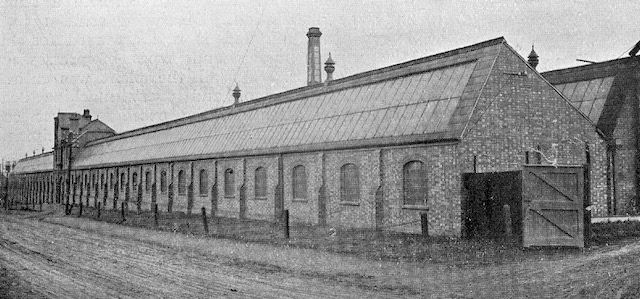In the previous blog we explored where you could have travelled to in the days of turnpike roads should you have turned off the Reading & Hatfield at Hut toll (in today-speak that would be from Hatfield Road to Colney Heath Lane). We followed a private toll road via Tollgate Road until reaching the Great North Road east of Welham Green, which is the Enfield & Lemsford Turnpike).
After the closure of the toll system the roads became open for public use without charge as ownership transferred to the Highways Board and then to many county authorities, as they still are today.
For us on the east side of St Albans there are two interesting connections between the town of Enfield after the closure of the toll system, specifically Fleetville, and the other Marshalswick. For those who have already clocked the title of this blog will have guessed that the Fleetville connection is probably Bycullah Terrace, the parade of Hatfield Road shops opposite Morrison's.
 |
| The section of Hatfield Road between Arthur Road and Woodstock Road South. |
In passing, the Marshalswick connection is Jersey Farm, for Dr Corner moved his farm from a part of Enfield Chaseside close to the Northern Hospital because the Piccadilly Line extension was being built nearby. More of that on another occasion.
 |
| Enfield Chase and its early settlements, some of which still feature within the modern London Borough. COURTESY THE ENFIELD SOCIETY |
 |
| The outer terminus of the Liverpool Street to Enfield Town station which helped to promote early residential commuting development in the nearby Bycullah estate. |
 |
| There has been a long-standing bus connection between St Albans and Enfield. Route 313 bus waiting at St Peter's Street. |
We will focus on the Fleetville connection which is close by on Chaseside, west of the historic town of Enfield. The Chase itself was an ancient open and wooded space across the boundaries of Hertfordshire and Middlesex. As London expanded and the communities of Southbury, Edmonton and Enfield itself, grew larger, the part of the Chase close to the Town (Enfield Town) attracted the first railway route (of three), so an estate close to the station and close to the western boundary of the existing urban area was sold for residential development; mainly large detached villas and equally spacious semi-detached homes, of which the key road was named Bycullah Road. Today the majority of the addresses have been replaced by blocks of flats and modern town terraces.
 |
| Bycullah House and its extensive grounds in the early 19th century before the City commuting estate across nearby Chaseside. COURTESY NATIONAL LIBRARY OF SCOTLAND |
 |
| Portion of late 19th century Bycullah estate to the west of Bycullah House from which the estate and its connecting road took its name. COURTESY NATIONAL LIBRARY OF SCOTLAND |
 |
| The connection with Fleetville begins here with Thomas E Smith both owner of Bycullah House and Smith's Printing Works, the beginning of Fleetville, then outside of the city boundary. |
Mr Smith died in 1904 and Bycullah House passed on and remained occupied until the Second World War, surviving as a building, but minus much of the remaining surrounding grounds, until the 1960s. However, we can show that a residential road in Enfield and a very short length of Hatfield Road, Fleeetville remains as a link to Thomas E Smith and a Colonel of the British Army in India.


No comments:
Post a Comment